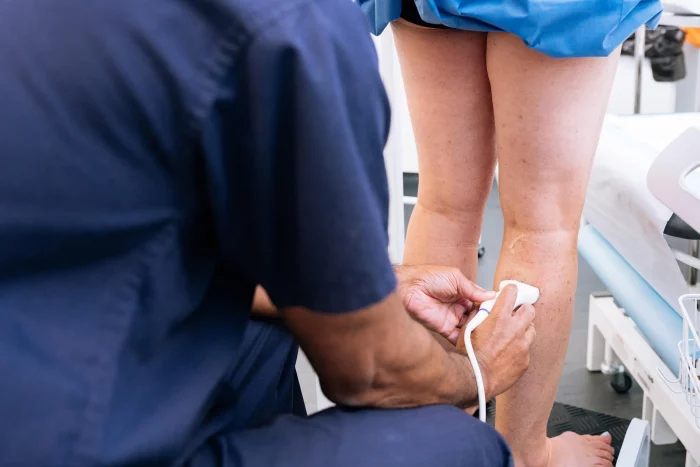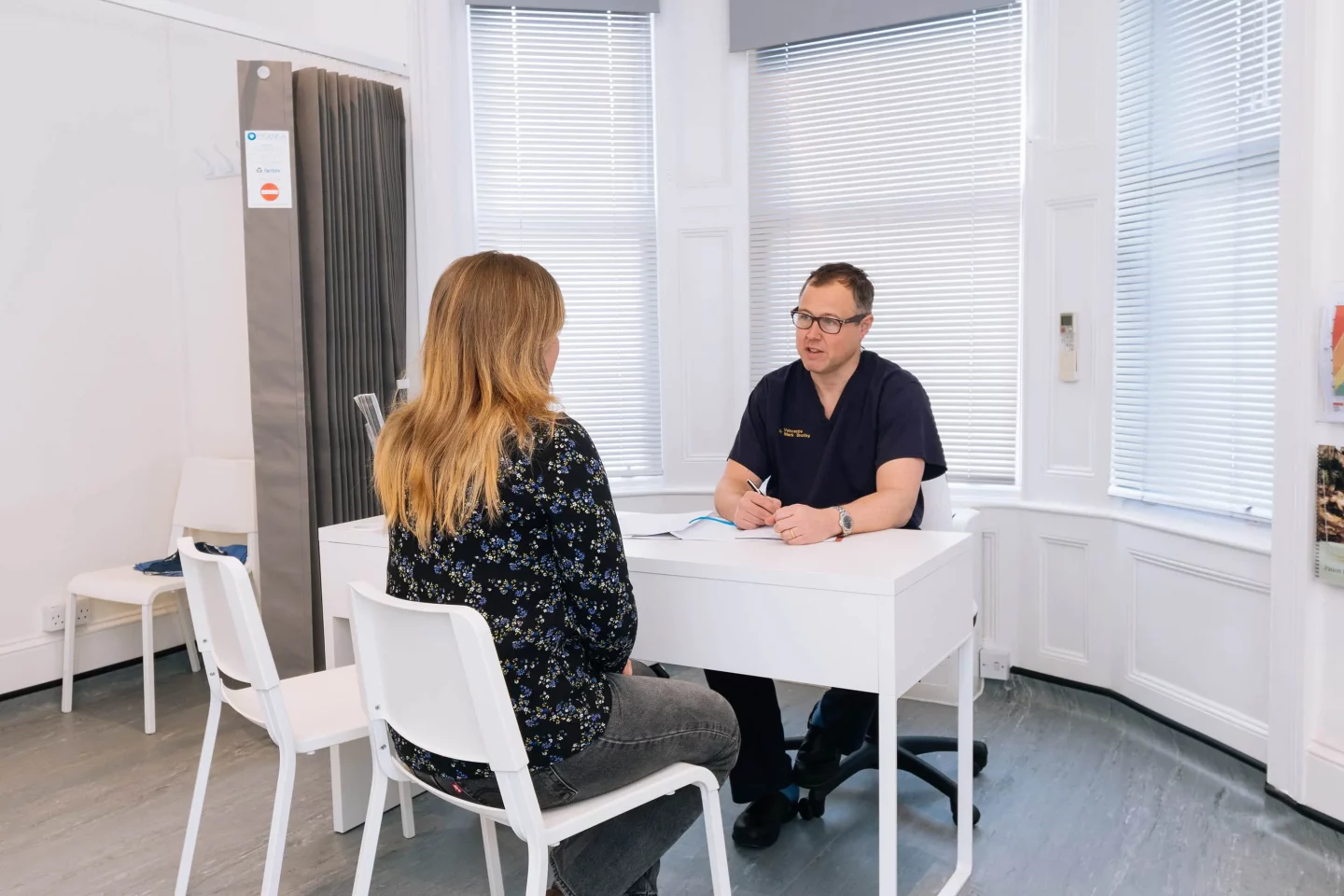When is the best time to get mild varicose veins assessed?
When varicose veins first develop, it’s not always necessary to have them treated straight away, unless of course, they begin to bother you cosmetically or cause symptoms.
Measures such as compression stockings and exercise are usually recommended at this stage to manage the symptoms of early varicose veins.
The pressure inside the veins gradually builds up over time as a result of the blood pooling inside the vein, and this can lead to gradual development and progression of your symptoms.
You may begin to experience feelings of slight aching, throbbing or heaviness in your legs, as well as slight swelling in your ankles and feet usually towards the end of the day.
We would advise booking in for a consultation at Veincentre at this stage. Although your varicose veins might not be having a profound effect on your day-to-day life, getting them treated before they progress is the best option. If you leave them, the blood will continue to flow in the wrong direction, causing more pressure inside the veins. This means the symptoms will get worse as a result of the hindered blood flow.
Our colour duplex ultrasound scan can assess the direction of blood flow, allowing our specialist consultants to easily confirm whether there is an underlying cause that needs to be treated to relieve your symptoms.
Moderate symptoms requiring medical care
If you don’t seek medical intervention for early varicose veins, they are likely to get worse over the course of months and years in the way of progressive symptoms and the veins becoming more prominent and unsightly.
We would recommend treatment if throbbing, aching, pain and heaviness is persistent and getting worse, as this indicates that the pressure within the veins is more severe. Swelling in the lower legs and ankles in the evenings can be more noticeable, and to relieve this we recommend wearing compression stockings and elevating your legs.
You may find that after a busy day, cramping is more painful and you may also experience itchy and burning veins. As varicose veins continue to worsen, your skin might begin to appear discoloured or reddened around the location of the veins.
At this stage, we would recommend that you attend your nearest Veincentre clinic for a consultation and scan to prevent further medical progression of varicose veins, and think about your treatment options which would be explained by your consultant at the appointment.
The usual treatment recommendation is endovenous laser ablation (EVLA) to treat the underlying valve problem, with foam sclerotherapy used to treat the visible veins. These procedures are the gold standard treatments, recommended by National Institute for Health and Care Excellence (NICE). Over 95% of our patients say that their treatment exceeded their expectations. In some cases, for people with very large veins, avulsions (removal) may be recommended instead of foam sclerotherapy.

Severe symptoms needing urgent treatment
If varicose veins are not treated up to this point, they may progress more to the point where the pain, throbbing and aching is so severe that day to day tasks are becoming difficult.
As the leg swelling and skin discolouration continues, varicose eczema can occur and venous ulcers can develop. Venous leg ulcers develop in around 6% of cases. If your skin has broken down and you have developed an ulcer, we strongly recommend getting in touch with us and booking a consultation.
Ulcers are extremely painful to live with and can have a huge impact on your day-to-day life. In a few cases, varicose veins can bleed if they are knocked, due to the tender skin around the site of the veins. The veins can also occasionally become inflamed (a condition called phlebitis) which can be recurrent and progressive, which can increase the risk of deep vein thrombosis.
We would absolutely recommend treatment at this stage, to free you of living with the burden of varicose veins and the symptoms & appearance that they come with.
How Veincentre can help
Whilst varicose veins can be left untreated, we would always recommend seeking treatment with us as soon as possible, to prevent your veins from progressing to the severe stages.
Our treatments are walk-in, walk-out, led by our consultants and recommended as the gold standard by National Institute for Health and Care Excellence (NICE).
Feel inspired by our patient stories and discover how Veincentre have helped them through their vein treatment journey.
For further advice and support, contact our patient advisory team today on 01782 753960.

